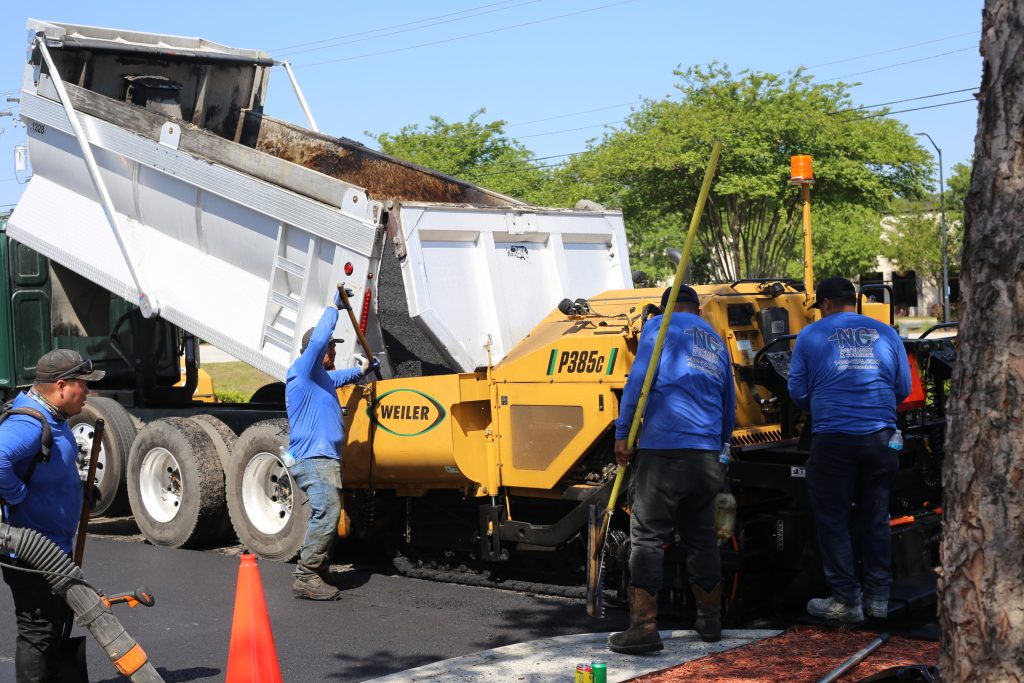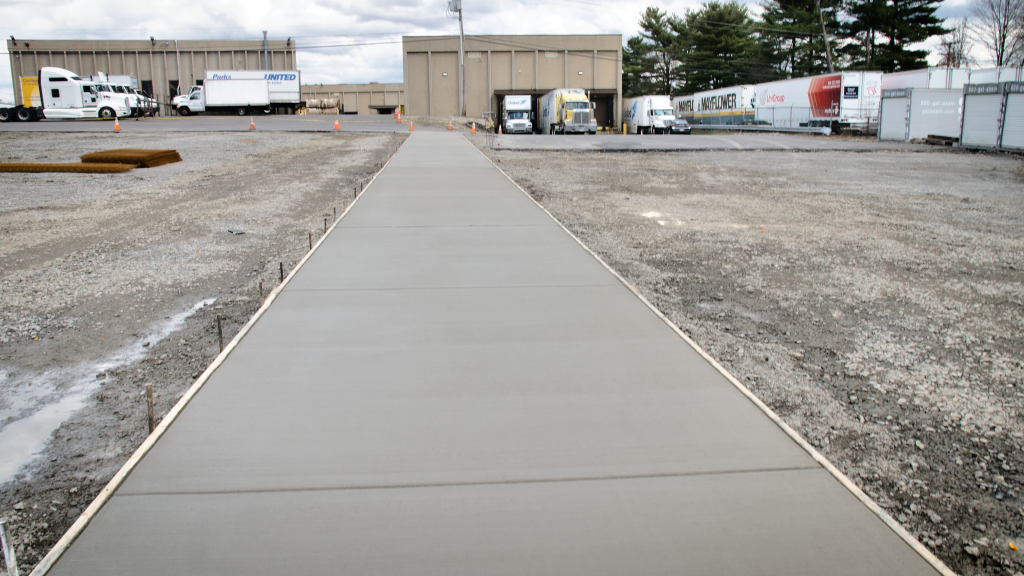Heavy-duty industrial pavements are built to handle massive loads and constant traffic. These surfaces support trucks, forklifts, and heavy machinery every day. Proper design ensures they last for decades without frequent repairs.
When building these pavements, every detail matters. Factors like soil type, drainage, material strength, and expected load must be considered. Ignoring one small detail can cause cracks, rutting, or complete pavement failure.
Understanding the Purpose of Industrial Pavements
Industrial pavements differ from regular roads. They must support repeated heavy loads without losing shape. Common applications include warehouses, ports, manufacturing plants, and loading docks.
Each area experiences unique stress and wear. That’s why pavement design starts with understanding how it will be used daily.
1. Subgrade Evaluation
The subgrade is the soil layer beneath the pavement. Its strength directly affects pavement performance. Weak or poorly compacted soil can lead to settlement or cracking.
Before construction, engineers test the soil for density and moisture. Improving weak soils through stabilization or replacement is essential for long-term durability.
2. Proper Drainage Design
Water is the enemy of strong pavements. Standing water seeps into layers and weakens the structure. A good design ensures quick water removal through proper grading and drains.
Installing sub-drains and using permeable materials helps prevent damage. Drainage is not optional. It’s one of the most important design considerations.
3. Choosing the Right Materials
The choice of materials determines the pavement’s lifespan. Heavy-duty pavements often use high-strength concrete or asphalt mixtures. Each option has advantages based on budget and use.
Concrete is ideal for static loads like storage yards. Asphalt works better for dynamic loads and flexible use areas. Engineers choose materials according to performance needs and site conditions.
4. Thickness Design
Pavement thickness is crucial for strength and load-bearing capacity. Engineers calculate thickness based on traffic volume, load type, and soil strength.
A thicker section provides better support but increases cost. Balancing thickness with efficiency ensures long-lasting performance without overspending.
5. Load Distribution and Reinforcement
Heavy loads must be evenly distributed across the surface. Reinforcement with steel mesh or geogrids improves load distribution. These materials help reduce cracking and deformation.
In large industrial yards, reinforcement ensures consistent support under constant heavy traffic. Without it, surface damage can occur within months.
6. Surface Texture and Friction
Surface texture affects traction and safety. Industrial pavements require enough friction to prevent vehicle slippage.
Texturing concrete or using special asphalt mixes helps create a durable, non-slip surface. Proper texture also improves drainage and reduces wear from tires and machinery.
7. Joint Design and Control
For concrete pavements, joint spacing and layout are critical. Joints control where cracks form and prevent random cracking.
Sealants should be used to protect joints from water and debris. Correct joint placement keeps pavements stable and reduces long-term maintenance costs.
8. Temperature and Environmental Factors
Extreme temperatures cause pavements to expand and contract. In hot areas, materials must resist softening. In cold regions, freeze-thaw cycles cause cracking.
Engineers design mixes that suit local climates. Choosing temperature-resistant materials ensures pavement strength year-round.
9. Maintenance Planning
Even the best pavement requires maintenance. Routine inspections identify cracks, drainage issues, or uneven wear early.
Timely sealing, patching, and resurfacing prevent bigger problems later. Regular care extends pavement life and saves on future repair costs.
10. Sustainability in Pavement Design
Modern pavement design considers environmental impact. Using recycled materials like reclaimed asphalt or crushed concrete reduces waste.
Energy-efficient processes and local materials lower carbon emissions. Sustainable designs meet today’s needs without harming future generations.
Practical Example: Designing for a Freight Terminal
A freight terminal in the Midwest needed a surface to handle thousands of truckloads monthly. Engineers evaluated soil strength and installed thick asphalt with reinforced layers.
They added drainage channels to prevent standing water. After five years, the pavement still shows excellent performance with minimal cracking.
This example shows that proper planning always pays off in pavement longevity.
Ready for a Stronger Foundation?
The Pavement Group provides expert paving solutions for commercial and industrial projects. We use only the highest-quality materials and proven techniques to ensure lasting results. Contact us today for a free quote, and let’s build something solid together!
Frequently Asked Questions
1. What are heavy-duty industrial pavements used for?
Heavy-duty industrial pavements are designed for areas with frequent heavy vehicle movement. They support machinery, storage loads, and large transport trucks. You’ll often find them in factories, shipping yards, and logistics centers. These pavements need special materials and designs to handle stress safely.
2. What is the most important factor in pavement design?
The most critical factor is soil strength beneath the pavement. Weak soil can cause cracking or deformation. Proper soil testing ensures the foundation supports heavy loads. Without a solid base, even strong pavement materials will fail over time.
3. How thick should heavy-duty pavements be?
Thickness depends on expected load and soil conditions. Engineers use data from site testing to calculate exact the thickness. Heavier loads require thicker pavements for durability. The goal is to balance strength and cost without overbuilding.
4. Why is drainage so important in pavement design?
Poor drainage allows water to weaken pavement layers. Standing water causes cracks, potholes, and structural damage. A good design directs water away from the surface quickly. Proper drainage greatly extends pavement life and performance.
5. What materials are best for industrial pavements?
Concrete and asphalt are the two most common materials. Concrete works best for static loads and durability. Asphalt offers flexibility and easier maintenance. Engineers select materials based on use, climate, and budget.
6. How does reinforcement improve pavement strength?
Reinforcement spreads loads evenly across the surface. It helps prevent cracking and rutting under heavy vehicles. Steel mesh, geogrids, or fibers can be used for reinforcement. This added strength reduces long-term repair and maintenance costs.
7. Can environmental factors damage heavy-duty pavements?
Yes, temperature changes and moisture can cause serious damage. Heat softens asphalt, while freezing causes cracking. Designing with climate-appropriate materials prevents early wear. Environmental planning is vital for pavement durability and safety.
8. How can sustainability be included in pavement projects?
Sustainability uses recycled materials and efficient processes. Reclaimed asphalt and concrete reduce waste. Designs can also lower energy use during construction. Sustainable pavements last longer and benefit the environment.
9. How often should industrial pavements be maintained?
Routine maintenance should happen every year. Regular inspections detect cracks or water buildup early. Prompt repairs prevent larger structural issues later. Proper care ensures long-term value and safe operation.
10. What are the signs of pavement failure?
Cracking, rutting, and uneven surfaces signal early failure. Water pooling or fading color may also appear. Ignoring these signs leads to rapid deterioration. Timely repair keeps heavy-duty pavements safe and functional.


